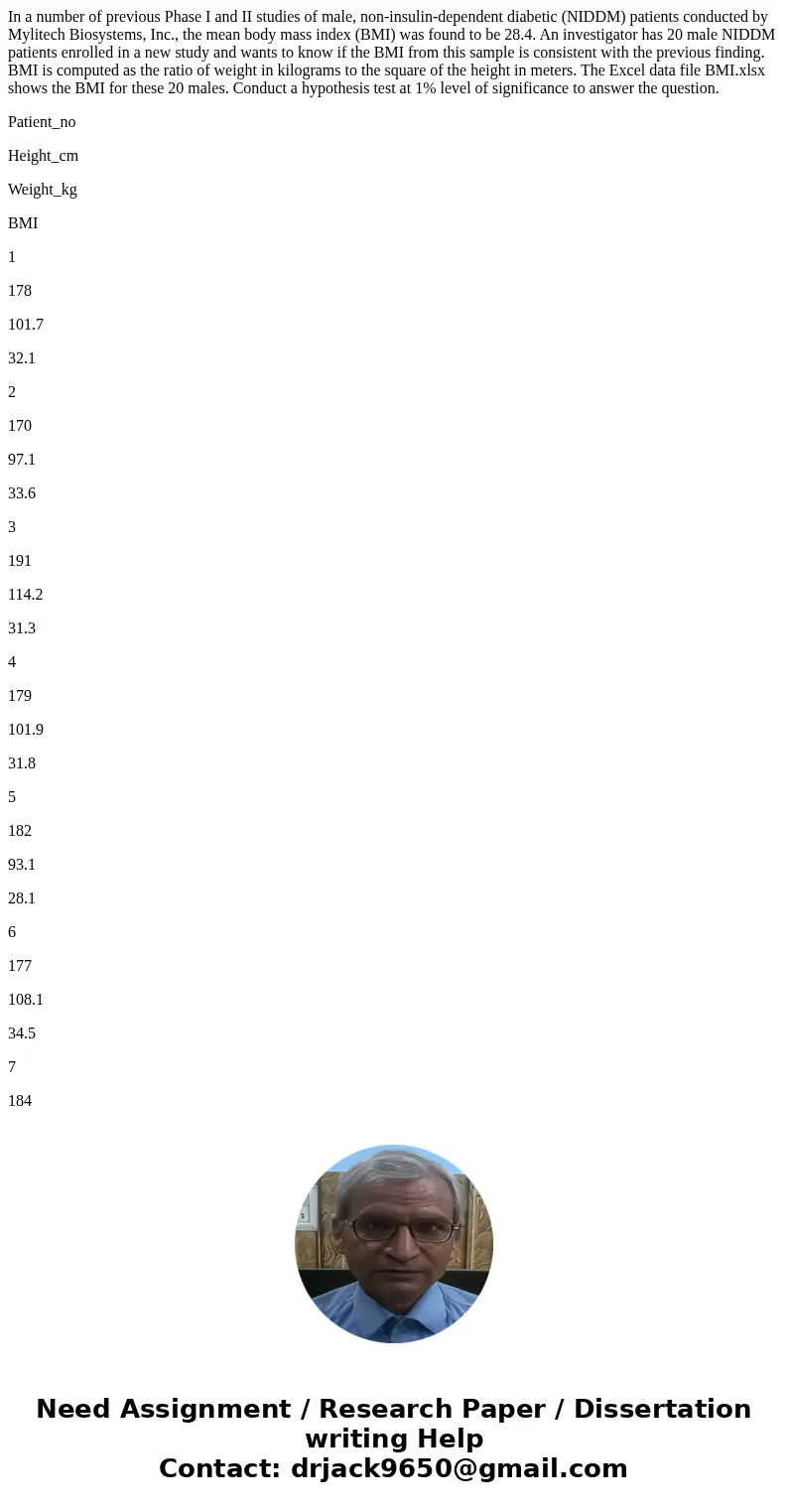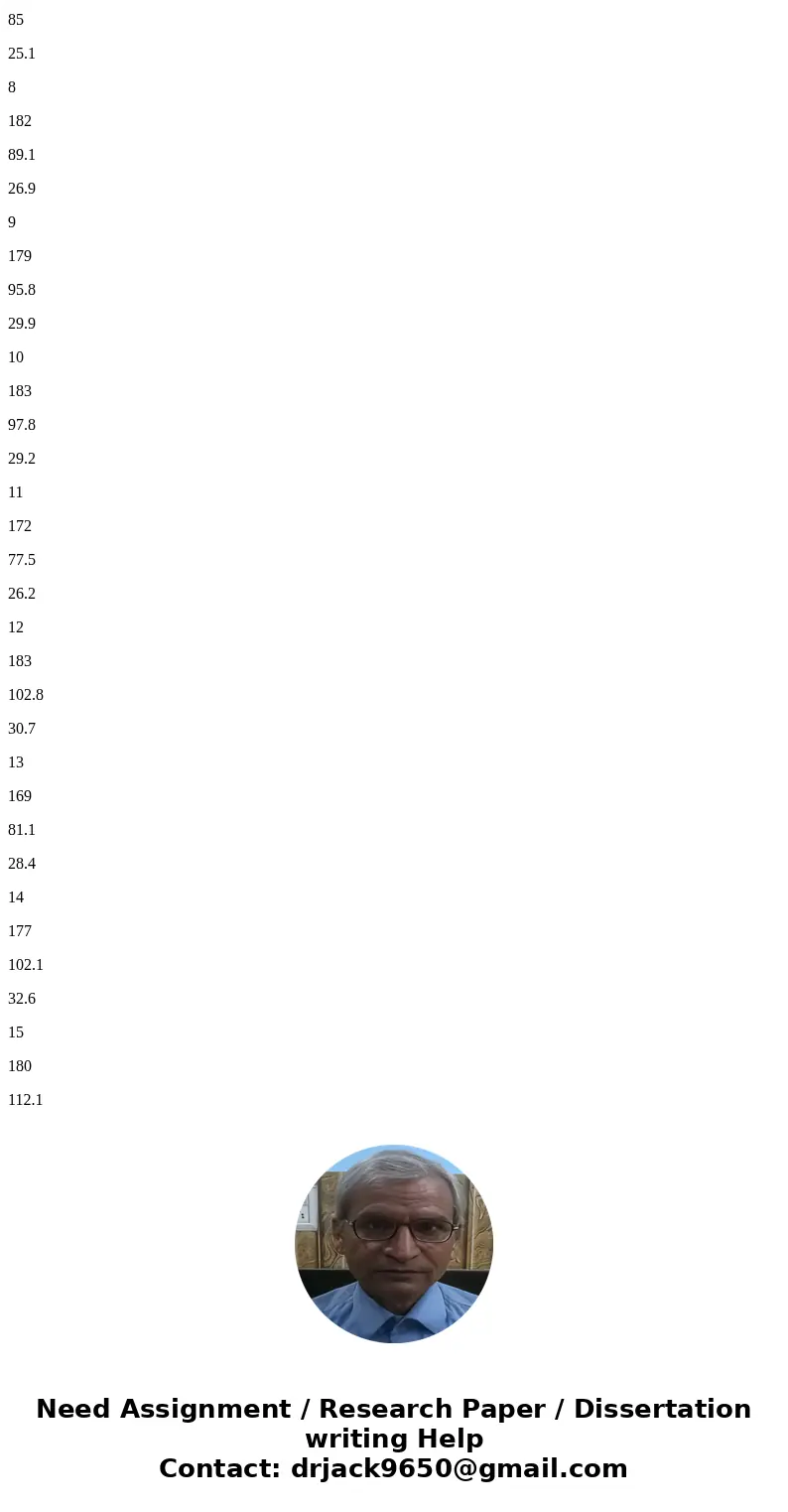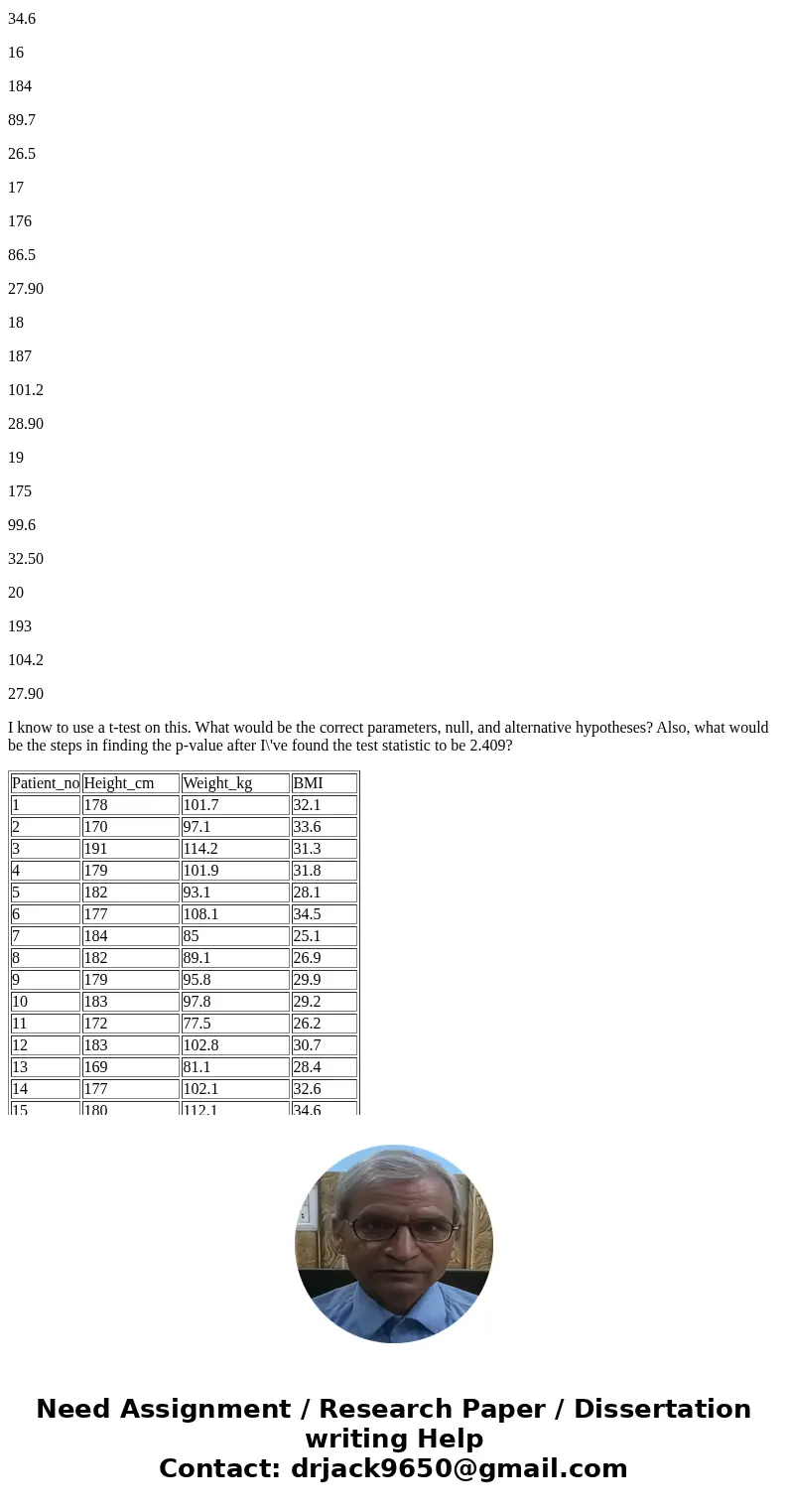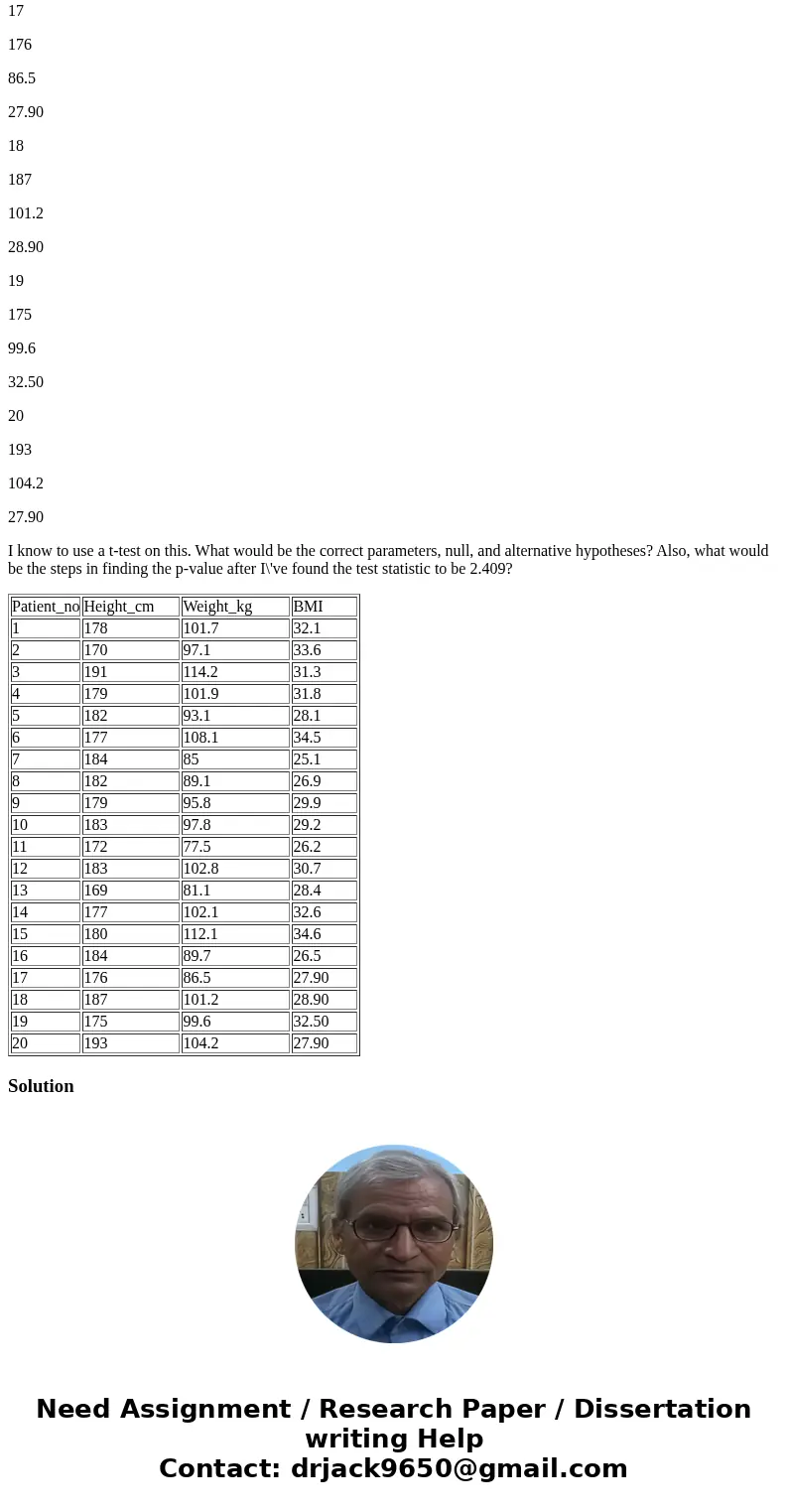In a number of previous Phase I and II studies of male nonin
In a number of previous Phase I and II studies of male, non-insulin-dependent diabetic (NIDDM) patients conducted by Mylitech Biosystems, Inc., the mean body mass index (BMI) was found to be 28.4. An investigator has 20 male NIDDM patients enrolled in a new study and wants to know if the BMI from this sample is consistent with the previous finding. BMI is computed as the ratio of weight in kilograms to the square of the height in meters. The Excel data file BMI.xlsx shows the BMI for these 20 males. Conduct a hypothesis test at 1% level of significance to answer the question.
Patient_no
Height_cm
Weight_kg
BMI
1
178
101.7
32.1
2
170
97.1
33.6
3
191
114.2
31.3
4
179
101.9
31.8
5
182
93.1
28.1
6
177
108.1
34.5
7
184
85
25.1
8
182
89.1
26.9
9
179
95.8
29.9
10
183
97.8
29.2
11
172
77.5
26.2
12
183
102.8
30.7
13
169
81.1
28.4
14
177
102.1
32.6
15
180
112.1
34.6
16
184
89.7
26.5
17
176
86.5
27.90
18
187
101.2
28.90
19
175
99.6
32.50
20
193
104.2
27.90
I know to use a t-test on this. What would be the correct parameters, null, and alternative hypotheses? Also, what would be the steps in finding the p-value after I\'ve found the test statistic to be 2.409?
| Patient_no | Height_cm | Weight_kg | BMI |
| 1 | 178 | 101.7 | 32.1 |
| 2 | 170 | 97.1 | 33.6 |
| 3 | 191 | 114.2 | 31.3 |
| 4 | 179 | 101.9 | 31.8 |
| 5 | 182 | 93.1 | 28.1 |
| 6 | 177 | 108.1 | 34.5 |
| 7 | 184 | 85 | 25.1 |
| 8 | 182 | 89.1 | 26.9 |
| 9 | 179 | 95.8 | 29.9 |
| 10 | 183 | 97.8 | 29.2 |
| 11 | 172 | 77.5 | 26.2 |
| 12 | 183 | 102.8 | 30.7 |
| 13 | 169 | 81.1 | 28.4 |
| 14 | 177 | 102.1 | 32.6 |
| 15 | 180 | 112.1 | 34.6 |
| 16 | 184 | 89.7 | 26.5 |
| 17 | 176 | 86.5 | 27.90 |
| 18 | 187 | 101.2 | 28.90 |
| 19 | 175 | 99.6 | 32.50 |
| 20 | 193 | 104.2 | 27.90 |
Solution




 Homework Sourse
Homework Sourse